Interaction - Camel Rides
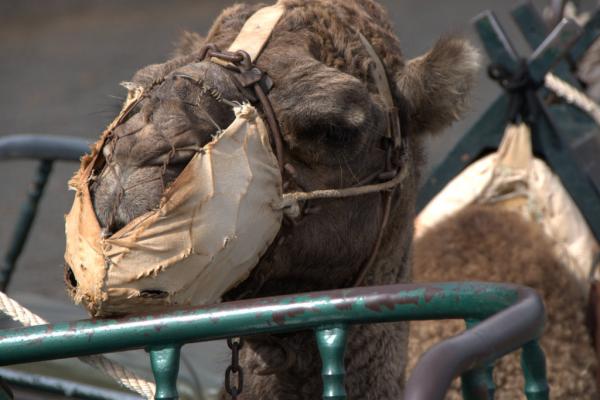
Camels are used in tourist activities such as camel rides or picture taking. These activities may have a negative impact on their wellbeing and cause health problems to these animals since they are not allowed to develop their natural behaviors or may be treated badly. Sometimes, their owners do not have the resources or expertise to handle them correctly, and keep them healthy and well.
Spitting or screaming may indicate that the animal has suffered a bad experience or is in pain. They scream when they are nervous, afraid or because they have been separated from their young. Camels wearing fabric muzzles usually spit and/or bite which indicates that they feel they have to defend themselves against people because of previous bad experiences.
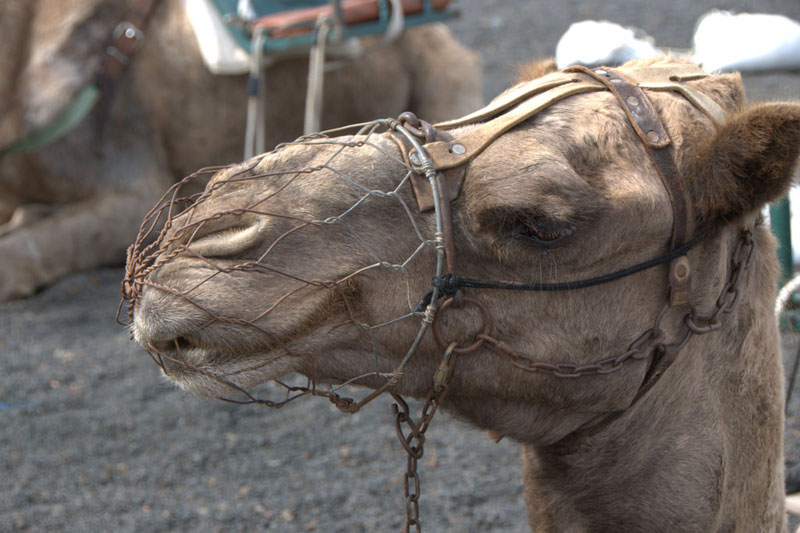
In some places rudimentary metal straps are bound around their head. Friction and straps that are too tight cause wounds that are sometimes not visible at first sight or because they are hidden under the equipment. Sores underneath the metal or leather straps around their heads indicate that these animals spend all their life tied up forced to sleep with their head held up, until they get too tired and give in to the metal strapping, even though it hurts. It is important to check that the animals do not have wounds or abrasions and that they lie down and get up swiftly. If it takes a stick to get the camel to stand up this indicates that the animal is scared or tired, cannot nor does not want to get up.
Sometimes camels are controlled with hooks, pegs or ropes that are pulled directly through the tissue of their external nostrils, a very painful procedure. If pulled too hard the rope can rip the tissue. Another gruesome method is the use of jaw ropes, which cut into the camel's mouth. Camels have weak jawbones that could be broken using a rope in this way.
The most common method used to identify camels is still the cruel fire branding. Other methods used are tattooing the inner lip or the use of ear tags. But since camels have small ears those tags may bother the animals and they start scratching to get rid of them. This can cause infections and seriously injure their ears. So far the most effective and less painful identification method is the insertion of a subcutaneous microchip.
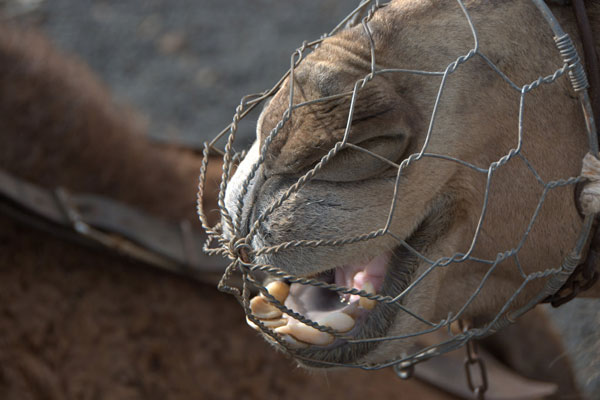
ACCOMODATION
These animals should be kept in herds. The males, if not castrated, cannot be with the group but should be kept at least in an enclosure and not permanently tied up.
It is essential that they have effective ventilation and protection from sun, rain, humidity and drafts (they get a cold easily and do not like getting wet). It is also important for them to have a place to stand and lie that is dry and clean and is of a soft substrate such as sand or loose gravel. It is not unusual to see camels tied up onto high poles or sticks which do not allow them to sit down and therefore they cannot rest.
FEED
When their natural food is not easily available, camels tend to ingest objects like ropes or plastic which can cause them serious health problems or even be fatal. It is important to keep them away from plastic and rubbish in general.
Often the food given to these animals lacks sufficient nutrients, especially minerals such as salt. Camels are well known for their ability to survive without water for several days, however this depends on the breed and the work they do. A camel that carries around tourists works very hard, sweats and needs to drink water (30 to 40 liters) every day. Camels suffer thirst like humans. Not providing them with enough water is an abuse.
When these animals are dehydrated, they regulate their body temperature, sweat less and produce less urine, but this is a protection mechanism only for extreme situations.
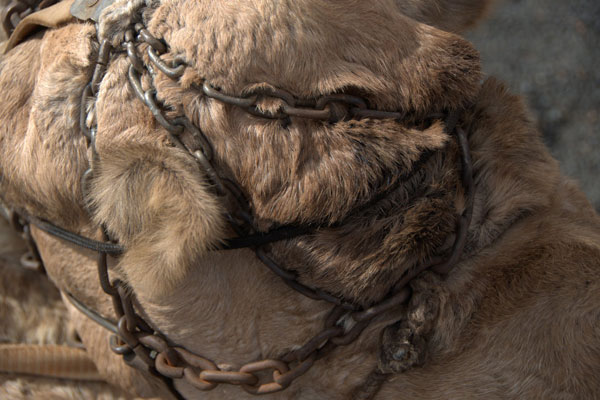
HEALTH
Animals used in caravans often develop joint disorder, osteoarthritis and arthritis.
It takes camels 6 to 8 years to become mature and their bone formation is not completed until later. If camels under 4 ½ years are used in camel rides, their growth can be seriously affected. Unfortunately it is common in many places to use camels that are too young.
Camels are animals that travel long distances in the wild. The camel's foot is flat and soft and adapted for sandy soils. However, when used in rides, the camels may have to walk on tarred, hard surfaced roads and ground which is littered with sharp objects such as nails, wire and broken glass that can injure their soles. The pain from the wounds can make the animal lame.
It is therefore very important to take care of the feet and legs of these animals. The trail should be flat, since the animals might get hurt when rushed down hills carrying a heavy load.
Sick animals may develop a fever and do not eat. They are weak and their belly and legs become swollen. Their hump becomes smaller and smaller. These animals can develop skin problems and most suffer from lung diseases. Camels eat earth or chew bones when they have worm infections in their stomachs or mineral deficiencies.
Infections of the skin caused by parasites are a big problem in camels. To prevent skin diseases, it is important that camels and dromedaries do not stay in wet areas or around areas of dung especially when the flies are common after rain.
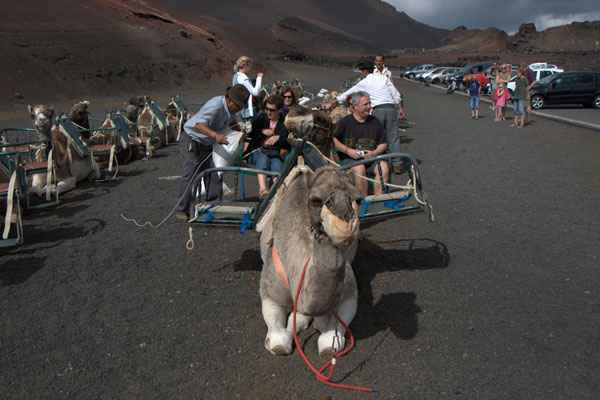
HAZARDS TO HUMANS
Male camels become mature and will mate at 6 years of age. The female comes into heat for the first time when she is 3 to 4 years old. There is a breeding season when mating takes place and which also depends on availability of pasture, rain and cold and will vary from region to region Both male and female camels become restless and are difficult to handle in the breeding season.
